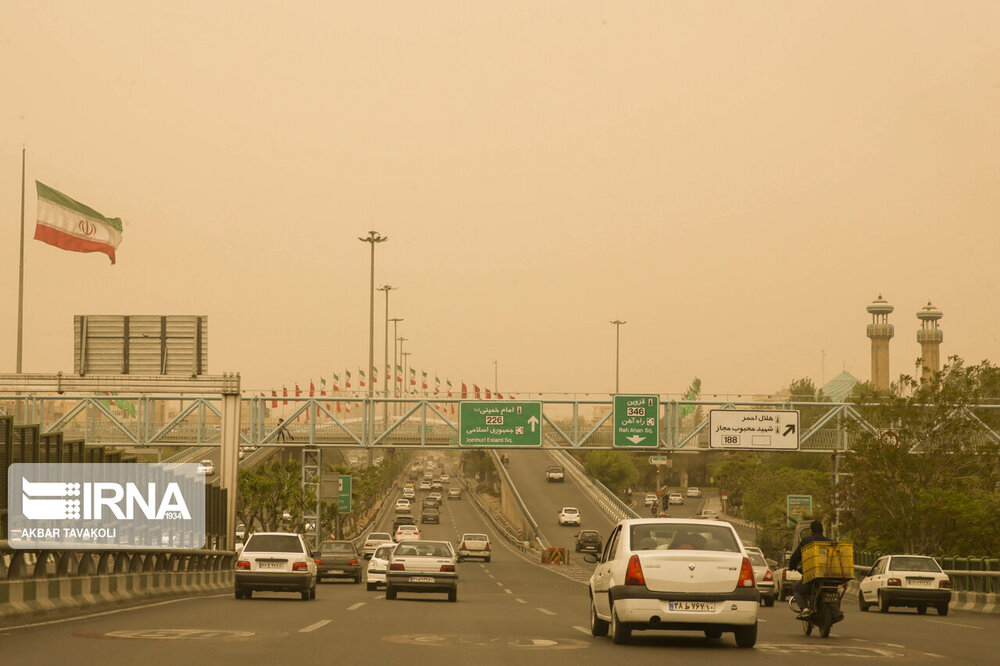SDSs mitigation requires enhanced diplomacy

TEHRAN – Controlling sand and dust storms (SDSs) requires strengthening diplomacy, and it will never be eradicated unless international institutions reach a consensus.
The SDSs phenomenon is no longer an uninvited guest because it has been plaguing the country for several years and has caused problems in many provinces. According to experts, natural and human factors are involved in the occurrence and severity of this phenomenon which is mainly caused by excessive consumption of water and drying up reservoirs.
The internal dust sources are estimated at 34.6 million hectares, generating an average amount of 4.22 million tons of dust per year, about 1.460 million hectares are dried wetlands.
Some 4.23 million tons of dust are raised per year, which means the loss of soil fertility will hit the agricultural sector.
Moreover, 300 million hectares in the neighboring countries are giving rise to SDSs, which transport dust into Iran. The total dust density is estimated at about 150 million tons.
In fact, the dust is raised from Turkmenistan, Uzbekistan, Afghanistan, and Pakistan in the northeast; Iraq, Syria, Saudi Arabia, and Jordan in the south, southwest, and west.
On Friday, a dense mass of sand and dust storms entered Iran from Iraq and affected the western and central provinces, and eventually hit 25 provinces, including Tehran, Alborz, Kermanshah, Ilam, Zanjan, and Kordestan, causing the air pollution index of Tehran to reach a very dangerous scale.
Dariush Gol Alizadeh, Head of Iran's National Climate Change Office (NCCO) of the Department of Environment told IRNA on Tuesday that the hotspots of the dust haunting the country in the last few days in eastern Syria, western Iraq, as well as Jordan, and Saudi Arabia.
These dust sources have appeared many years ago, and due to the drought and water shortages that have occurred in recent years, they have both intensified and increased in number. In fact, abandoned agricultural lands in those countries are a source of SDSs, he explained.
If serious action is not taken in the form of diplomacy and international institutions do not comply with the requirements to eradicate SDSs, the countries will always be haunted by the phenomenon, he lamented.
SDS not only affects people’s health but also has a psychological effect, it also has a great negative effect on agricultural products, and on the reproduction of plant species and activities such as beekeeping, he further noted.
At present, this phenomenon cannot be dealt with, but the damage can be minimized, he said, adding, programs to be carried out in this regard can be planting crops, shrubs, and finally soil stabilization by biological mulches.
€370 million to combat SDSs
In the past four years, about €370 million has been spent by the National Development Fund to combat SDSs, which had good results, but it seems that the annual credit is declining as conditions improve, Ali Mohammad Tahmasebi, head of the national working group for SDSs mitigation, said.
Last [Iranian calendar] year (March 2019-March 2020), €100 million was earmarked in this regard, but the next year's budget bill has proposed €20 million for SDS mitigation, which experts believe will even destroy those measures, he explained.
“However, various measures have been taken to fight the phenomenon, including, planting seedlings on about 26,000 hectares of dust centers in the past three years, as well as managing grazing in 2 million hectares of the protected areas and natural resources.”
Conservation agriculture (sustainable agriculture) was conducted on 160,000 hectares of farming lands, in addition to 100,000 hectares of dredging, he concluded.
FB/MG
Leave a Comment